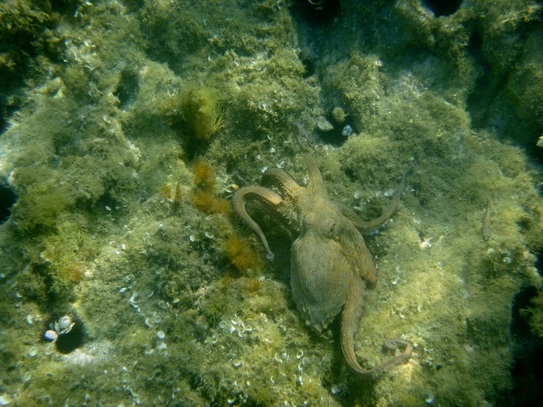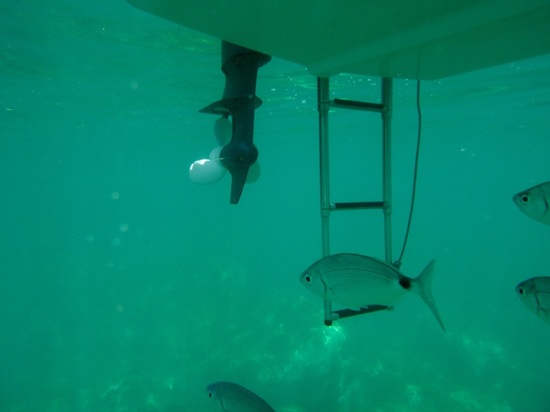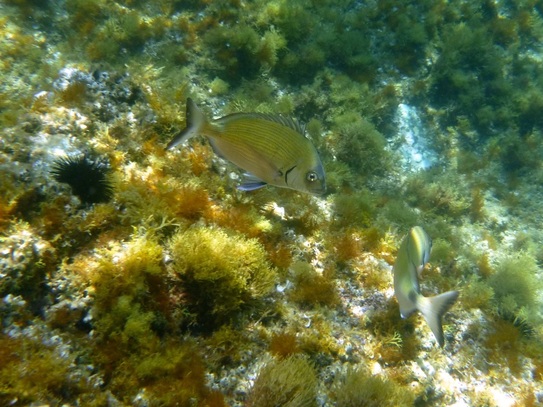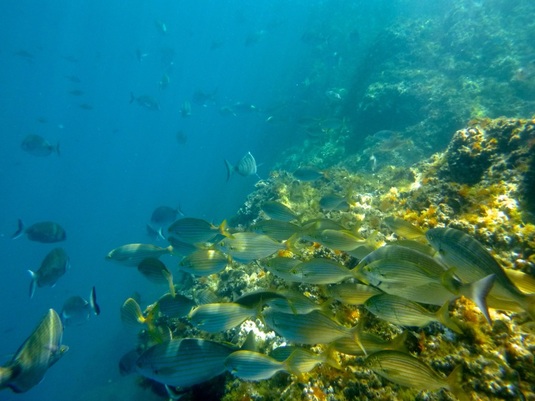After a late and turbulent spring, we seem to have progressed very quickly to a heatwave – or at least to what we, with less than three years' experience, certainly regard as a heatwave! It does not do the garden much good; seeds and plants, which were lovingly tended through the vagaries of the spring weather, now wilt, crisp and fry – and the gardener does much the same!
The obvious solution, as I have mentioned before, is to take to the Mediterranean, and spend days both on it, and, refreshingly, in it. We have launched both at Argelès and Banyuls, and from those two centres covered quite a stretch of coast. This activity has reinforced our feeling of last year, which was that the stretch of coastline known as the Côte Vermeille, is truly one of the great glories of the Pyrénées Orientales, but really only appreciable from the water. We have ventured further south into Spanish waters this year, discovering perhaps the finest bay yet – the Platja de Garbet, south of the worryingly-named town of Colera, (where I see there is a Platja dels Morts).
On the way down there we stopped, as last year, under one of the high, black cliffs on either side of Port Bou, and marvelled again at the flight of the rock- and cave-nesting swifts as they fly out into the sun and over the water. It is a wonderful experience to be swimming in the silken waters, with screaming swifts hurtling above you. While relaxing later in the bobbing boat, staring up at the vertical cliffs, which must be at least two hundred feet high, I tried to watch individual birds carefully and estimate their wingspan, an almost impossible task as they hurtle overhead. The point was that I was convinced that I had seen white on some of the birds, which must mean that they were alpine swifts, with a wingspan of some 21 inches according to my book. Common swifts there certainly were in numbers, too, making a very fine spectacle.
Elsewhere, with a lower, more vegetated and less rocky shore, I was able to watch and contrast the more fluttery flight of sand martins as they patrolled the crest of the escarpment in search of insects. Several times this year I have confirmed my feeling that all these hirundines choose to nest in busy places, where there is lots of life around, including lots of traffic, which they do not appear to mind. This has been confirmed in Perpignan, Sorède, St. Nazaire and the main street of our own village of Le Pont (Reynes), where the calls and flight of swifts, swallows and house martins entertain you as you wait for a bus. By contrast, in our normally quiet suburb, (where it seems to me, the houses still offer adequate ledges for nesting) few birds are actually resident although plenty may be seen high overhead on a calm evening. Perhaps they do feel some real affinity with old centres of population and human activity?
We have been in the water a great deal, with Martine, of course, properly under it, me pottering along gently on the surface. The great sighting this year has been our first octopus; Martine in fact saw two, on different days, but I actually managed to view the second which was a great thrill. He (Martine promptly christened it "Oscar" so it has to be "he " – sad, I know!), was very well camouflaged, and aware of our presence but in no way suggested real alarm, just moving gently away. They have a strange, amorphous, flowing motion, visibly changing shape as they glide over and around the rocks, a characteristic which may be intended to confuse a predator.



